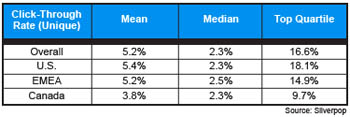How did we live – or work – before e-mail?
It’s no surprise that e-mail has become so indispensable – and, hence, so overwhelming.

• In 2010 the Radicati Group estimated that 294 billion emails get sent every day. (Surely, the number has gone up over the past two years…)
• All too many of us get more than our fair share. A Harris poll, also in 2010, found that 50 e-mails a day is about all most of us can manage to read, digest and act upon. Yet all too many of us find ourselves on the receiving-end of 100 or more e-mail messages in a single working day. And for people who have work to do – writing reports, preparing presentations, or (who knows?) thinking out smart marketing strategies or coming up with clever headlines – being interrupted 50 or 100 times a day makes it hard to stay focused and on-task.
All of which makes e-mail etiquette more and more important.

Here, as elsewhere, etiquette boils down to consideration – considerateness – and common sense.
“I’m too busy to show common courtesy – or make my meaning clear” is not a subtext message your reader will welcome – and bad e-mail habits are counter-productive. They waste time and increase the chance of miscommunication and foul-ups.
Here are a few oft-offered rules that would make life and work a whole lot easier for all of us if more people followed them.
1. Be concise. This is one I would be wise to remind myself of daily. Long e-mails are a pain – especially when a dozen or so other e-mails are waiting to be read. Keep it short – and to-the-point.
Yes: e-mail is a great way to document an exchange of information. The recipient can read or re-read at leisure – or print the e-mail and use it as a checklist if you’re transmitting a detailed list of items that all need action or attention. Barring some catastrophe, the e-mail will stay where it’s put in the computer for future reference – without taking up much space or wasting trees.
But keep your e-mails from being longer than they need to be to do the job. And never forget that any long e-mail will be an inconvenience to your recipient – and, often as not, won’t be read (or read carefully). So send a long e-mail only when its usefulness outweighs the inconvenience and the likelihood that it won’t be read attentively. If a long e-mail seems to be a good idea, tell your reader, upfront, that it’s a long e-mail: please read this at a convenient time.
2. In the Subject: line, clearly state the content or topic. Two days, two months or two years later, it’ll be a whole lot easier for your recipient to find the e-mail. “Hi” or “Hello” won’t be much help.
But it’s seldom a good idea to pack your entire message in the Subject: line. Even if you end it with “EOM” (End Of Message – which most folks won’t understand in any event).
And if you get an e-mail Subject-lined about X, don’t send a Reply about Y, a different topic. Send a separate e-mail with a Subject: line that matches your message.
3. Be clear. Tell your reader clearly what your purpose is in writing – and what you want as a response. Write clear, complete sentences. And make sure you include all relevant information needed to understand your request or point of view. Too busy to be clear? Wait until you have time for it. Otherwise you’re wasting your time –and your reader's.
Tip: Read your e-mail out loud before hitting “Send”. You’ll weed out a lot of unclarity that way.
4. Don’t send giant attachments. Big attachments take too much time to download, even with a fast Internet connection. Plus, if you send a big attachment, you risk blocking other e-mail addressed to your recipient – because your oversized attachment may fill the recipient’s mailbox “quota.” Anything over a megabyte or two: .zip it. Anything over, say, 5 mb: Send it via an online delivery service – Yousendit.com or the like.
If you must send a big attachment in an e-mail, ask your recipient when it would be a good time to send it – and send it then.
5. Use “Reply All:” only to keep people in the loop who need to be. Don’t keep or include anybody on the “Reply” list that doesn’t need to spend valuable time reading what you have to say.
6. If you can’t read an entire e-mail on your Smart Phone / mobile – or respond to it clearly – don’t respond until you’re in front of a computer and have had the time to read the whole thing.
And remember, e-mailers: all too often your e-mail WILL be read on a mobile. So keep it short. Etc.
Here are a few web pages where you’ll find lots of other tips on e-mail:
http://email.about.com/od/emailnetiquette/tp/core_netiquette.htm
And if you’re looking for a long list: http://www.101emailetiquettetips.com/